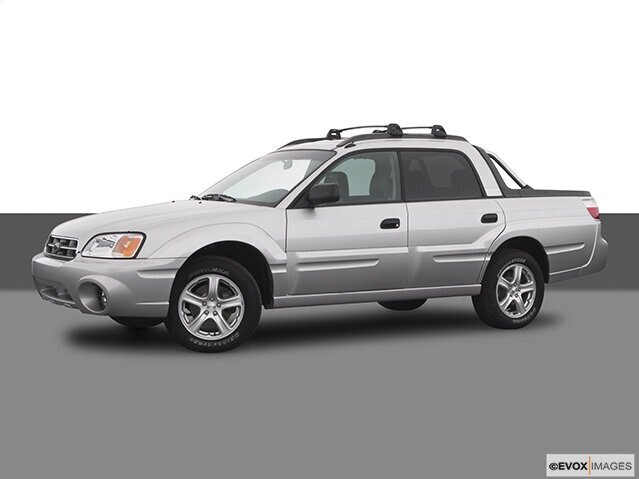The story of the Subaru Baja is a story of resurrection. Essentially an Outback station wagon turned into a quirky short bed vehicle, the Baja was a flop when it was first released in 2003 and spent only three years on the market. Today, however, a Baja in good condition can sell for around $10,000—about half the value of a base model Baja when it was new. It is an extraordinary price for a 14 to 17-year-old vehicle, and one that signals its rise as a cult classic.
When a writer is tasked with explaining this phenomenon—as many have—their article is likely going to be accompanied by a hero shot of a bright yellow Baja at a Pacific beach or climbing the hills above it. These photos come from the original 2003 brochure. But while often attractive, manufacturer hero shots are not an ideal way to illustrate a balanced editorial of a car and, as in the case of the Baja, they can quickly appear dated. However, many automotive publications struggle to find better and more unique images to accompany their text—and the Baja isn’t the only vehicle that brings these challenges to the surface. To avoid this, the best automotive editorial photography comes not from manufacturer’s marketing materials, but in high-quality stock libraries that offer compelling and timeless images.
CAR EDITORIALS SERVE A WIDE AUDIENCE WITH DIVERSE TASTES
For many, car editorials are assumed to focus exclusively on reviews of new or upcoming cars. But these publications know that there is a significant number of people who are interested in used cars, collect classic vehicles, love the offbeat, or just love cars period. Smart publishers, therefore, strive to serve all of these audiences through high-quality writing and striking visuals.
While automotive editorial photography of new vehicles is often plentiful, finding images that feature older favorites, cult classics, and quirky vehicles of years gone by can be challenging. Even if images are located, they often present issues due to rapidly evolving expectations of image quality. Low-quality photos of cars from the early 90’s may begrudgingly be accepted, but readers expect higher quality photos after the turn of the millennium—and a plentiful number of these photos.
Of course, the need for high-quality automotive editorial photography isn’t confined only to editorial retrospectives of decade-old cars. Finding comprehensive car photo galleries of even models released in the past few years can be difficult, particularly for economy cars, base trim levels, cars that were considered commercial failures, and those that were initially met with little fanfare in the automotive press. But as these vehicles enter the secondhand market, their appeal to car shoppers often grows and some cars may deserve another look from editorial publications and review portals.

THE PROBLEM OF FINDING IMAGES FOR EDITORIAL USE
For automotive publications, finding the time and the budget for photoshoots of older vehicles—or current vehicles that aren’t setting the world afire—can be impractical or even impossible. This is where automotive stock libraries can help. Stock image databases that specialize in car imagery provide the automotive editorial photography that publications need to create compelling visuals and give readers an in-depth look at a vehicle. Regardless of whether a car is newly released or a decade old, these libraries allow for the creation of informative, engaging editorials for both upcoming cars and cars from years past.
However, there are currently few stock libraries dedicated to automotive images, and those that do exist primarily serve dealerships. In fact, most automotive stock libraries mainly trade-in data designed to improve car sales and only offer automotive photography as an afterthought—and not to editorial publications. As such, finding a stock library that specializes only in-car images for use throughout the industry is essential to ensuring publications can access the best automotive editorial photography.
WHAT AUTOMOTIVE STOCK LIBRARIES BRING TO CAR EDITORIAL PHOTOGRAPHY
The best automotive stock libraries are those that focus solely on car imagery and understand the diverse needs of their clients. This means that they produce assets that are invaluable for dealerships and car rental agencies but also meet the needs of editorial publications. Through their expertise and years of experience, they know what matters to viewers.
A specialized library can offer a comprehensive overview of both the interior and exterior of each vehicle. They show the control layout, the driver and passenger spaces, the cargo space, and other details that tend to be cut out from automotive editorial photos—an unfortunate oversight, as these are typically the spaces that most inform everyday driving. Meanwhile, splash images are ideal for captivating readers with eye-catching visuals that often age better than those found in vehicle brochures. After all, no matter how scenic the beach was in the Baja photos, the images give an early twenty-first-century vehicle a distinctly late-twentieth-century feel.
Automotive editorial photography also doesn’t have to be limited to still photos. Assets like exterior spins, interior panoramas, and video footage can further engage readers. With their more modern feel, these assets are welcomed by those looking deeply into the cars of the past, present, and future. Thanks to recent technological advances, XR experiences may also be offered and help elevate editorials to a whole new level.
THE RIGHT PARTNER CAN OFFER THE RIGHT IMAGES
One of the great benefits of cutting-edge automotive stock libraries is their commitment to staying abreast of the latest car releases and offering first-to-market images of upcoming vehicles. What is often overlooked is that these libraries have been updating for several decades and built libraries of unparalleled depth and breadth. Whether writing about this year’s hottest car or producing a retrospective about a 20-year-old vehicle, they can provide all the assets needed to create powerful editorials. But it all starts with choosing the right partner.

